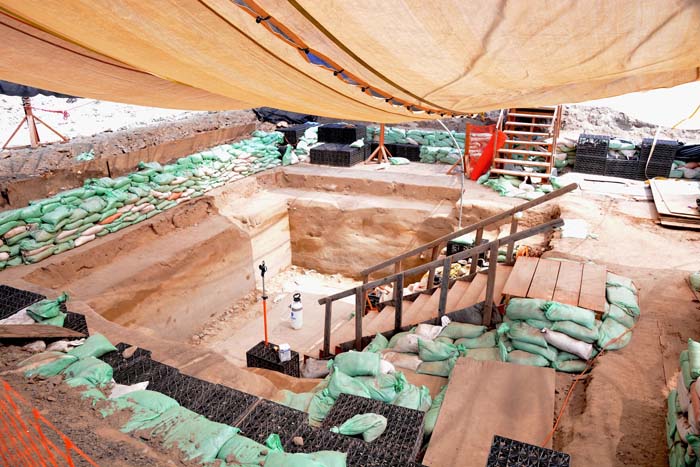OSU team finds ancient spear points believed to be oldest in North America
Published 7:00 pm Tuesday, January 10, 2023

- Overview of an excavation area at the Cooper’s Ferry site in Idaho in 2017.
CORVALLIS — Ancient weaponry dug up by an Oregon State University archaeological team along Idaho’s Salmon River is thousands of years older than any previously found in the U.S., offering more insight into the Pleistocene people.
Thirteen “projectile points,” some fragmented and others intact, date to roughly 16,000 years ago — that’s 2,300 years older than any points previously found at the same Cooper’s Ferry site and 3,000 years older than any found in North America.
The findings were recently published in the journal Science Advances.
“This shape and style of projectile points have not been found this early before,” said OSU Professor Loren Davis, who led the excavation team. “Nor, I would argue, have projectile points been found this early in any form prior to our discovery. This is the oldest example of projectiles in the Americas.”
He said others have claimed there might be projectile points in Mexico that go farther back than 16,000 years ago.
“But most people look at that evidence, and they really doubt that what we’re looking at are artifacts,” Davis said. “It looks like just a lot of broken rocks that may have occurred inside a cave. They don’t look anything like what we’re talking about.”
The professor underscored his team’s latest findings are “unmistakably the results of people fracturing, breaking rocks and making tools.”
“We actually found detailed expressions of the ways that people think about technology 16,000 years ago,” Davis said, “how they decided to take a block of rock and turn it into a spear point. They could have done it many ways, but they chose to do it this way, and that’s really important to be able to identify that.”
Photographs from the site show many of the projectiles are carved from different types of rocks, span half an inch to 2 inches long, and are sharp.
“At a minimum, they’re pursuing a hunting life way,” Davis said.
The projectiles were found under a layer of wind-blown glacial dust. Once wiped away, pits made by people could be seen.
“Inside these circular pits the size of medium garbage cans, we found flakes of stone from the production of those tools,” Davis said. “We also found whole and fragmented projectile points.”
The excavation was completed in 2018, but world events like COVID-19 and Brexit slowed down lab work, according to Davis.
“They say for every day in the field work, you might have a week’s worth of laboratory work,” Davis said.
Now that the findings have been published, the OSU professor said there’s a lot more his team can explore at Cooper’s Ferry, given that Davis and his students only studied a small segment of land.
“There’s younger time periods that have produced other interesting perspectives on what people were doing at the site at the time,” Davis said. “We’re going to be publishing them as we go; we have years ahead of us.”
As far as sites in other locations, Davis said, not all archaeological sites survive through time.
Sites can be “deeply buried” and hard to find or natural events can erode the landscape and destroy the archaeological record.
“The important part of what we’re doing is that we’re being able to show what it would look like if you were to find this,” Davis said. “It gives people an idea of what to look for. Sometimes, if we don’t understand what we’re searching for, we don’t understand we’ve found something very significant.”




